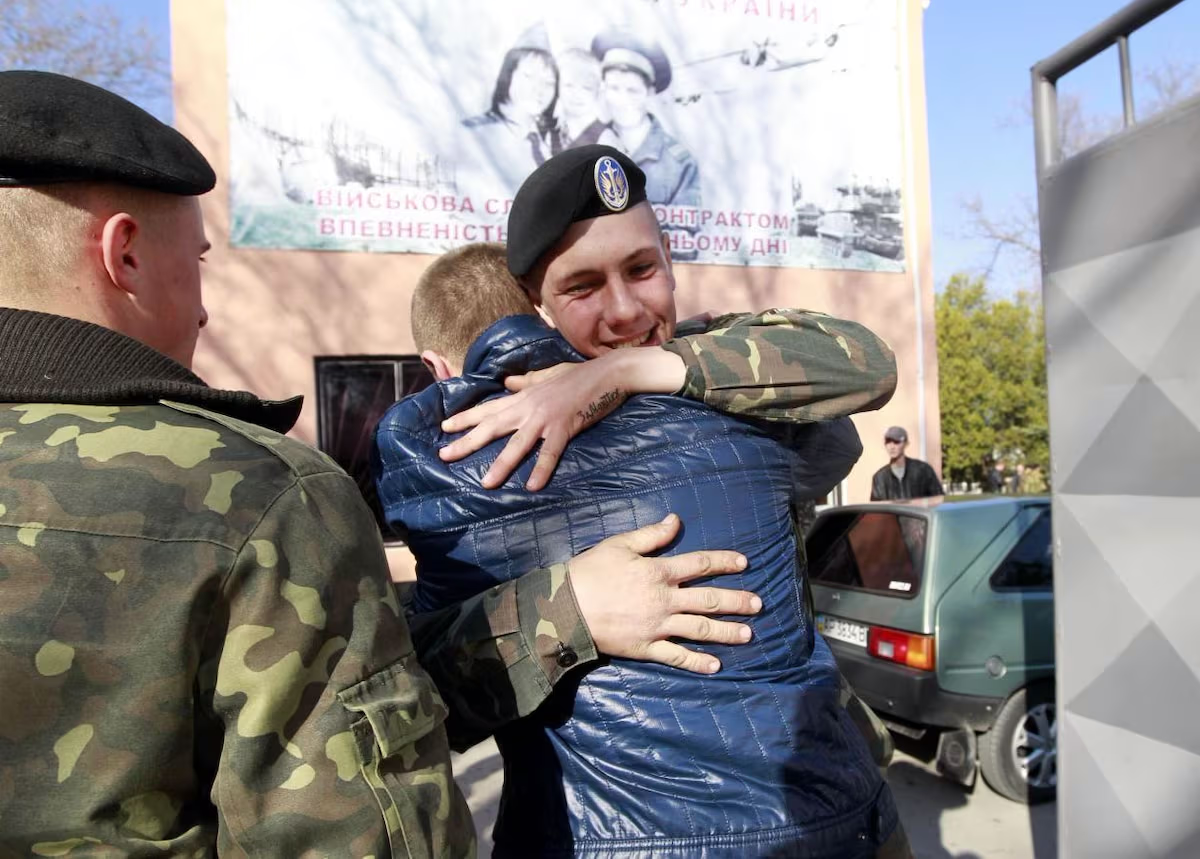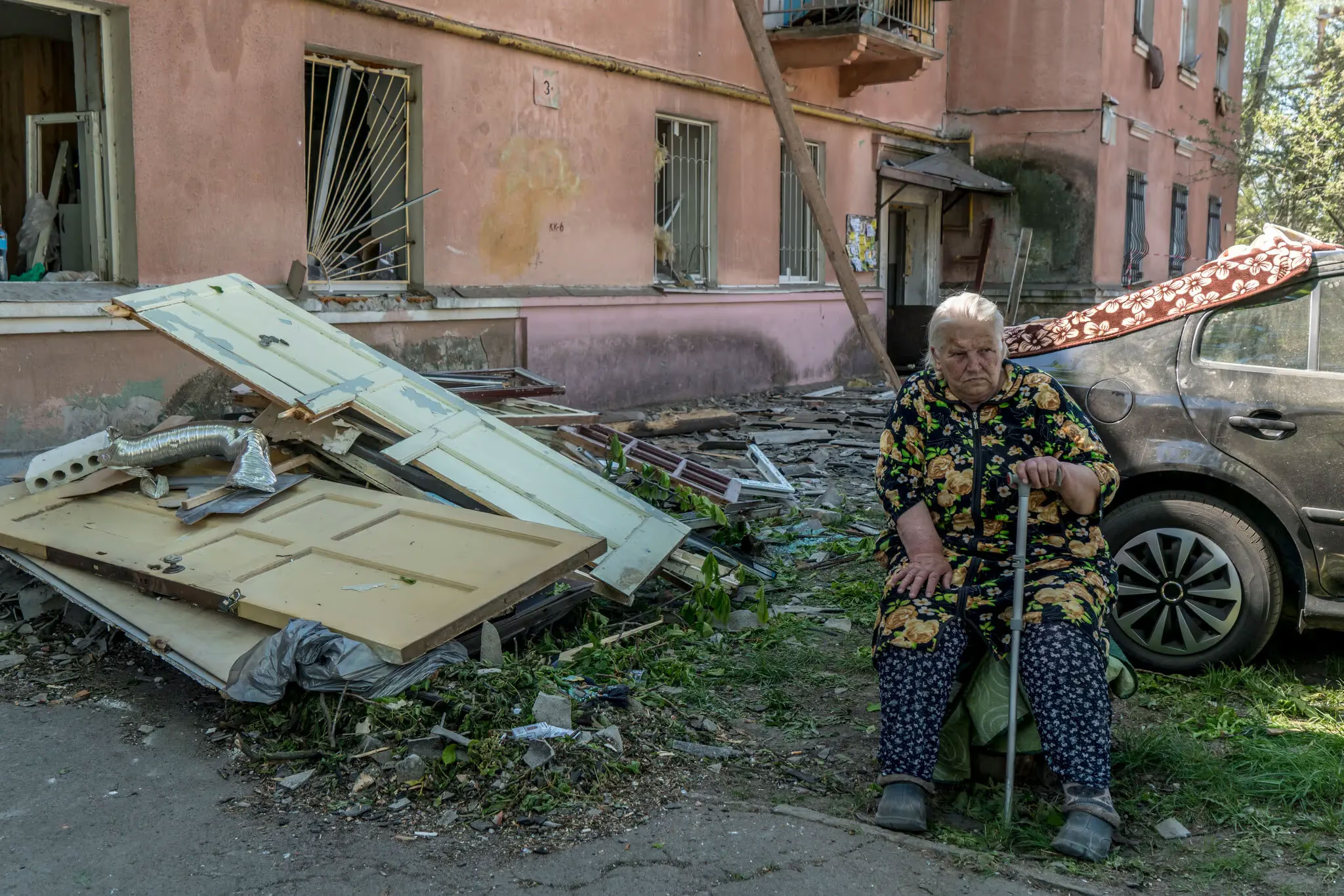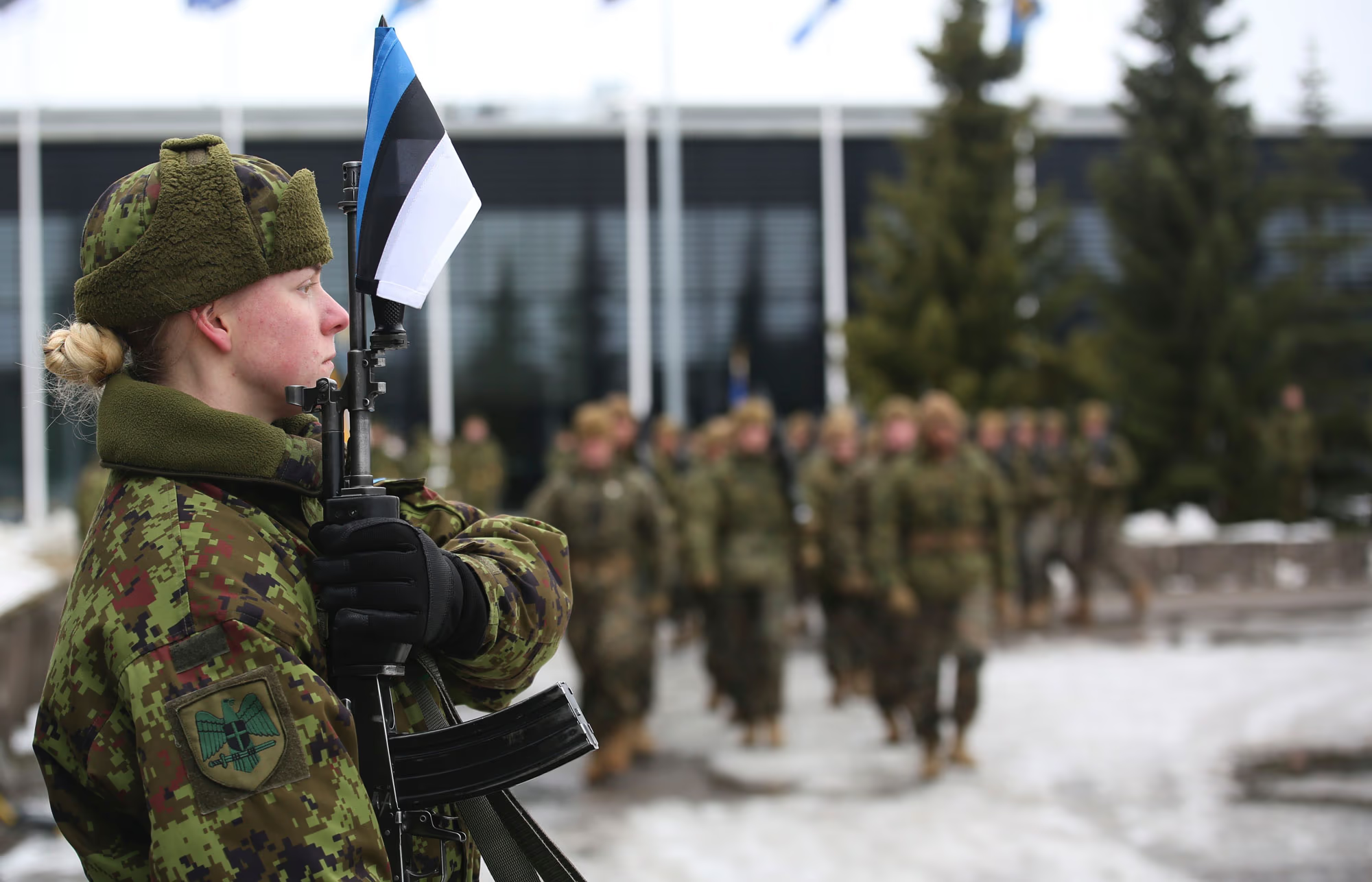For the second time in a decade, Ukraine risks emerging from war with a reduced territory. In 2014, Crimea came under Russian control virtually without a fight; today, Donald Trump's peace plan envisions the consolidation of even greater losses. Why was that first precedent so convenient for everyone—and why is the discussion about it still avoided both in Washington and in European capitals?
The 'Gifted' Peninsula
In the spring of 2014, Russian forces were occupying one Ukrainian base after another—"no shots were heard," recalled eyewitness sailors who left their barracks carrying personal belongings in plastic bags. "We had no weapons. We didn't fire a single shot," said marine Ruslan at the time. The absence of armed resistance created the myth of a "peaceful" annexation, which still allows the Kremlin to refer to the seizure as a "Crimean vote" rather than an act of war.

Ukrainian marines say goodbye before departing Crimea near a Ukrainian military base in the Crimean port city of Feodosia. March 24, 2014.
Collective Amnesia and a Convenient Scapegoat
Trump regularly brings up this episode to deflect accusations of "capitulation" to Putin today. In a recent Truth Social post, he wrote: "No matter what deal I make with respect to Russia/Ukraine, no matter how good it is, even if it’s the greatest deal ever made, The Failing New York Times will speak BADLY of it. [...] Why doesn’t this lightweight reporter say that it was Obama who made it possible for Russia to steal Crimea from Ukraine without even a shot being fired?" The message is clear: the responsibility lies with Democrat Obama, and the criticism should not target Trump but those who allowed the 2014 precedent.
Major English-language media outlets indeed rarely revisit how exactly Crimea came under Russian control. The agenda has shifted to discussing the "red lines" of 2025: whether Kyiv should be pressured into even more painful concessions—and whether they would justify a ceasefire.
The Logic of Current Negotiations
Richard Kemp's column in The Telegraph outlines the main argument of the "realists": Russia holds the advantage in a prolonged war, Ukraine cannot fight alone indefinitely, and Europe is not ready to fight at all. Therefore, Kyiv will have to accept the 2025 front line and effectively give up the south, the east, and de facto Crimea. Kemp suggests it is time to stop "moaning about Trump" and focus on rearming European armies.
Meanwhile, Trump is applying pressure on both camps. After a missile strike on Kyiv, he questioned whether "Putin even wants peace" and threatened "bank-related" secondary sanctions. However, the essence of his proposal remains the same: an immediate ceasefire in exchange for frozen lines and the de facto recognition of Russian jurisdiction over Crimea.

A 76-year-old Kyiv resident near a residential building damaged by a Russian attack on April 24, 2025.
Where Europe's Weakness Comes From
Since the start of the full-scale war, European countries have been increasing their military budgets—by 2024, already 22 allied nations had met the target of spending 2% of GDP compared to just three in 2014, collectively investing $485 billion. However, these figures pale in comparison to the stockpiles depleted by Ukrainian artillery and the real needs of NATO’s eastern flank. Spain, for example, has only now approved a roadmap to reach 2%—11 years after the lesson of Crimea. In this situation, Kemp’s call to "spend on defense instead of social programs" seems like political suicide for many capitals, making it easier to argue about Trump's character than to confront their own invoices.
Lessons That Are Dangerous to Ignore
Precedents matter. The unpunished seizure of Crimea became the entry price for the 2025 negotiations, where the stakes are much higher.
The illusion of a "quick deal" is both liberal and conservative. Both sides of the political spectrum dream of peace without costs—as long as they are not the ones paying.
Defense is expensive and slow. Even doubled EU budgets will only start delivering tangible results toward the end of the decade.
Ukraine's race against time. For Kyiv, every month of war means lost lives and infrastructure; for Moscow, it is a cheap way to convert time into leverage.
If Trump's peace plan cements new borders, the "Crimea without a shot fired" episode will shift from a one-time mistake to a systemic one. The very fact that today's discussions revolve not around reversing 2014, but around another "freeze," shows that the lesson remains unlearned. While Europe delays major procurements and U.S. politics waver between isolationism and leadership, Ukraine’s window of opportunity continues to narrow. Years from now, analysts may again ask—who allowed another piece of the map to be lost without a single shot.
Unpeace

"Would a U.S. President Risk Dying for Tallinn, Riga and Vilnius?"
Moscow Seems Ready to Find Out—An Interview With Germany’s Intelligence Chief

Why Trump’s Peace Plan Is Stalling
Hard Lessons From the 2022 Talks

Is Russia Preparing for the Next War?
The Expansion of Military Infrastructure Near Finland, Estonia, and Norway Raises Concerns of a Looming Conflict

Trump’s Plan Breaks the U.S. Principle That Borders Can’t Be Changed by Force
If Crimea Becomes a Precedent, Redrawing Maps May Become the New Global Norm

Managed Chaos in the Black Sea
How Russia Is Using the Blockade of Ukrainian Ports as a Political Bargaining Chip

Instead of Peace
JPMorgan Assesses Likely Outcomes of the War in Ukraine and the New Balance of Power in Europe

